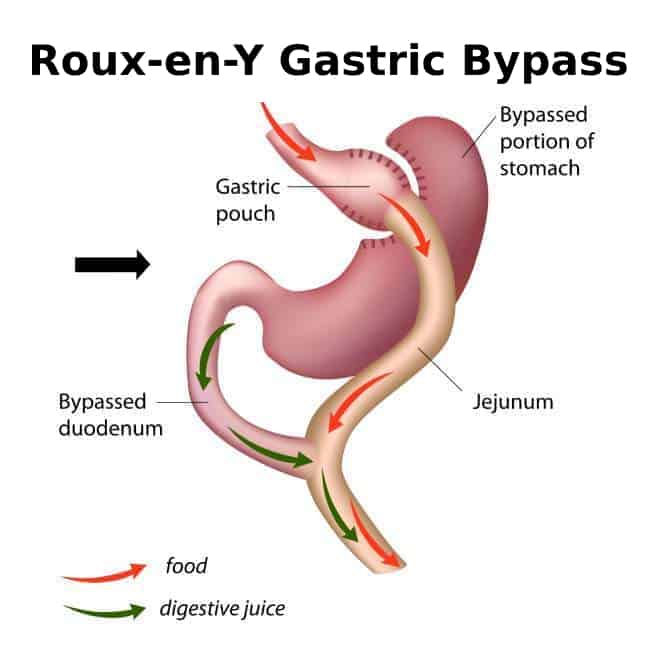
Roux-en-Y Gastric Bypass (RNY)
There are many ways to prevent obesity, a balanced diet and regular activity among them, and various methods of treating it. Weight loss routines are among the latter. The Roux-en-Y Gastric Bypass (RNY) procedure is one possible choice for obese persons who are morbidly obese and suffer from significant comorbidities.
The RNY procedure is a surgical routine involving several small incisions in the upper area of the abdomen. The surgical element involves laparoscopy. This is surgery using a laparoscope – a small instrument with a light on the end that allows the surgeon to see inside the abdomen.
Gastric bypass, also called Roux-en-Y gastric bypass, involves creating a small pouch of stomach and connecting the new pouch to the small intestine. Food swallowed goes into the small pouch then directly into the intestine, bypassing the majority of the stomach and the first section of the small intestine.
Before the Gastric Bypass Procedure
The patient will need to be assessed by members of the Bariatric Team. A Gastroscopy is performed by Dr Sofianos as a screening procedure prior to the RNY. Only once approval has been obtained from all team members, and the gastroscopy is normal, is a date for the RNY scheduled. Patients are instructed to undertake a physical exercise routine for a few weeks and refrain from using tobacco. They will also be asked to limit the food they can eat and stop certain medications. This will be all be discussed at your consultation with the various team members.
Candidates for the Gastric Bypass
To be a candidate, the patient
- Must have a BMI of greater than 35.
- Must have medical conditions that are a result of obesity such as type-2 diabetes, high blood pressure or severe sleep apnea.
- Be willing to commit to lifestyle changes that result in healthier living.
- Be willing to commit to regular medical monitoring of diet, lifestyle, and behaviour.
After the Gastric Bypass Procedure
Recovery for each patient is different, and the patient can expect to remain in hospital for at least one night and perhaps two. Once discharged the patient will be permitted only liquid food for the first week. The tree weeks following will require pureed food. After four weeks, normal food can again be part of the diet.
Gastric Bypass Procedure
The Gastric Bypass procedure is usually performed using laparoscopy which is a ‘keyhole’ technique involving small incisions.
The patient will undergo a general anaesthetic for this procedure.
The stomach is first divided into a smaller pouch (the size of an egg). The larger part of the stomach is effectively bypassed.
The small intestine is then divided and connected to the new pouch, which empties the bypassed stomach approximately 100-120cm downstream, resulting in a connection resembling the shape of the letter Y.
The procedure will take between around two hours depending on various factors associated with the individual.

